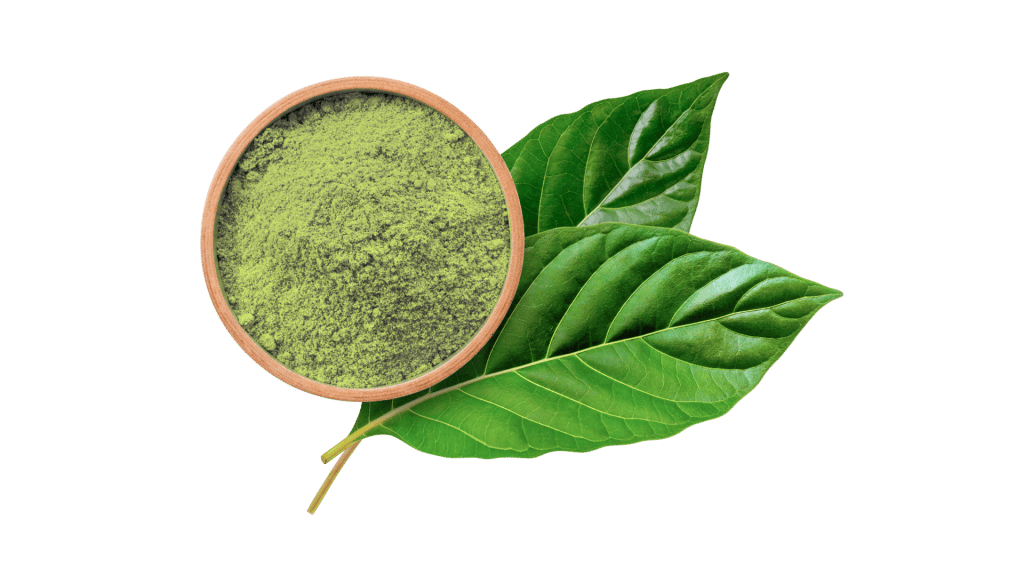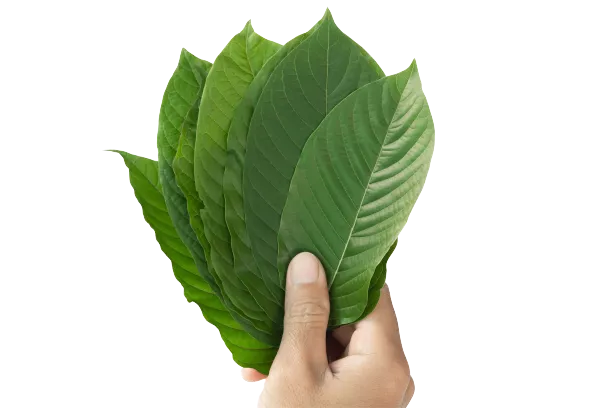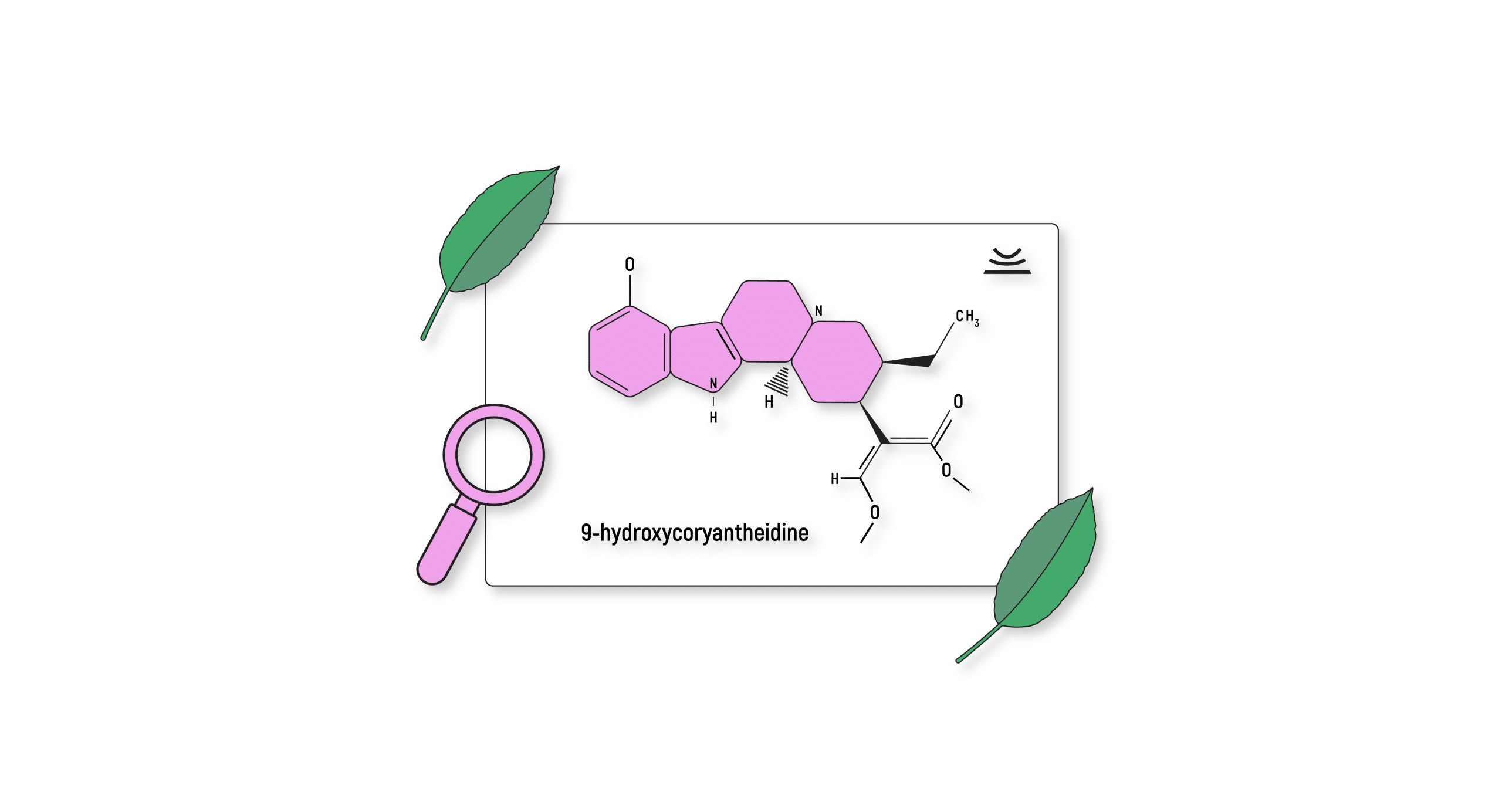What Is 9-Hydroxycorynantheidine?
9-Hydroxycorynantheidine is a minor alkaloid naturally found in kratom. Alkaloids are a class of organic compounds that contain at least one nitrogen atom and have a physiological effect on humans when consumed.
9-Hydroxycorynantheidine contributes comparatively little to the effects of kratom, given that it’s a minor alkaloid that appears in low concentrations. However, it still plays a role in the effects — and the popularity — of kratom as a whole.
What Does 9-Hydroxycorynantheidine Do & How Does It Work?
The primary effects of 9-hydroxycorynantheidine are analgesic in nature. Given that this is a minor alkaloid, there is comparatively little research available compared to major alkaloids, like mitragynine and 7-hydroxymitragynine. We’ll discuss the known effects of 9-hydroxycorynantheidine below.

1. Pain Reliever
It’s believed that the primary effect of 9-hydroxycorynantheidine is pain relief. This alkaloid is a partial agonist of mu-opioid receptors, meaning it can effectively relieve the perception of pain. In combination with 7-hydroxymitragynine, another analgesic alkaloid in kratom, 9-hydroxycorynantheidine can help dull muscle aches, joint pain, and even more severe nerve pain in some cases, according to users.
Mu-opioid receptors are found throughout the central nervous system. When opioids — or, in the case of 9-hydroxycorynantheidine, pseudo-opioids — bind to them, they limit the signals passing between neurons in the CNS. In essence, fewer signals fired means a lower potential for perceived pain.
2. Relaxant
Kratom users often find that high doses of kratom — specifically red vein strains — can produce deep relaxation and stress relief, sometimes serving as a sleep aid. These effects come about, in part, because of the mu-opioid receptor agonists in kratom. When alkaloids like 9-hydroxycorynantheidine bind to these receptors, it reduces the number of firings between neurons, acting as a central nervous system depressant.
3. Mood Elevation
Finally, 9-hydroxycorynantheidine can provide mood elevation and even feelings of mild euphoria in some users. The mechanism for this effect is similar to that for relaxation and pain relief. Mu-opioid receptors are essential for the body’s reward pathway [3]. When the alkaloid binds to mu-opioid receptors, the body gets a sense of reward triggered by a release of dopamine. This surge in dopamine is linked to euphoria and positive feelings.
Where Does 9-Hydroxycorynantheidine Come From?
9-Hydroxycorynantheidine occurs naturally in kratom leaves from the Mitragyna speciosa tree. This tree grows in warm, humid climates, specifically in Indonesia and some surrounding islands. The presence of 9-hydroxycorynantheidine and other alkaloids in kratom has led it to be used in traditional medicine for hundreds of years where it’s native, and now it’s becoming popular in the rest of the world.
9-Hydroxycorynantheidine can also be synthesized from mitragynine, so it’s believed that mitragynine naturally degrades over time and develops into 9-hydroxycorynantheidine [1].

Which Kratom Strains Are Highest in 9-Hydroxycorynantheidine?
9-Hydroxycorynantheidine is a partial mu-opioid receptor agonist, which means it’s an effective pain reliever [1, 2]. Most of the time, the specific levels of alkaloids in different kratom strains aren’t known, as the focus is on the two most prominent kratom alkaloids, mitragynine, and 7-hydroxymitragynine.
However, since 9-hydroxycorynantheidine is considered a pain reliever, it’s safe to assume that strains that provide the most pain relief are highest in this alkaloid. Red vein strains are generally best for pain relief, so they likely have the highest concentration of 9-hydroxycorynantheidine. Some of the most potent red kratom strains include Red Maeng Da kratom, Red Borneo kratom, and Red Bali kratom.
What Other Plants Contain 9-Hydroxycorynantheidine?
Aside from kratom, it seems there are no other plants that contain the alkaloid 9-hydroxycorynantheidine. Kratom may be the only major source of this compound.
Is 9-Hydroxycorynantheidine an Opiate?
No, 9-hydroxycorynantheidine is not an opiate. However, it has opiate-like effects on animal subjects and humans. The alkaloid acts as a partial mu-opioid receptor agonist, just like opiates. When a compound binds to these receptors, the pain signals traveling through the central nervous system are interrupted, and the perception of pain is reduced.
Since inter-neuron signals are blocked by the presence of both opiates and 9-hydroxycorynantheidine, both can relax the user and even induce sleep in larger doses.
Is 9-Hydroxycorynantheidine Safe?
Little is known about 9-hydroxycorynantheidine, so most of our knowledge about this alkaloid is based on kratom as a whole and not on individual alkaloids.
With that said, using 9-hydroxycorynantheidine via kratom is considered relatively safe, although there are some known side effects. One of the most commonly cited dangers of kratom is the potential for addiction, which is a genuine concern. Kratom and its opioid-like alkaloids — including 9-hydroxycorynantheidine — can be habit-forming if used improperly. Taking tolerance breaks and limiting your intake to 4 to 5 days a week can help you avoid dependence.

Side Effects of 9-Hydroxycorynantheidine
In addition to the potential for addiction, some minor side effects show up in larger doses, including nausea and GI upset. Other possible kratom side effects include lethargy, constipation, dizziness, mental fog, and anxiety.
Most of these side effects occur with larger doses. It’s unclear precisely what role 9-hydroxycorynantheidine plays in the presence or severity of these side effects.
How Much 9-Hydroxycorynantheidine Should I Take?
Like most of the other alkaloids in kratom, 9-hydroxycorynantheidine is usually not obtainable as a standalone product. Some kratom extracts contain pure mitragynine or 7-hydroxymitragynine, but most of the alkaloids — including most of the minor ones — can only be taken in the whole plant.
The average dose for kratom ranges between 2 and 8 grams, with eight being considered quite a high dose. Lower doses tend to provide more stimulating and nootropic effects, while larger doses typically provide more relaxation, sedation, and pain relief.
Most kratom users will be looking for 9-hydroxycorynantheidine for pain relief or relaxation. A larger kratom dose of 5 to 8 grams will likely provide the right amount of 9-hydroxycorynantheidine for these purposes.
How Long Do the Effects of 9-Hydroxycorynantheidine Last?
Once again, the specifics related to 9-hydroxycorynantheidine are unknown, given a lack of research on this minor alkaloid. It’s much easier and more helpful to speak on the duration of effects of kratom as a whole.
The noticeable effects of kratom usually last for between 2 and 6 hours for most users. The effects timeline can vary between users, though, as it’s based on several factors, including your tolerance and experience with kratom, body weight, the potency of the kratom, and how much kratom you take.

Wrapping Up: Why 9-Hydroxycorynantheidine Is an Important Alkaloid
The alkaloid 9-hydroxycorynantheidine is, as far as researchers know, only found in kratom trees. When combined with other alkaloids, 9-hydroxycorynantheidine creates some of the most sought-after effects of kratom, including pain relief, stress relief, and relaxation.
Research suggests that the presence of 9-hydroxycorynantheidine in kratom, a partial mu-opioid agonist, could be why kratom is sometimes effective for reducing opioid withdrawal symptoms. 9-Hydroxycorynantheidine is not an opiate itself, but it mimics the effects of opiates on the central nervous system. It can potentially allow kratom to be a bridge between opioid addiction and sobriety.
- Matsumoto, K., Takayama, H., Ishikawa, H., Aimi, N., Ponglux, D., Watanabe, K., & Horie, S. (2006). Partial agonistic effect of 9-hydroxycorynantheidine on μ-opioid receptor in the guinea-pig ileum. Life sciences, 78(19), 2265-2271.
- Kandasamy, R., Hillhouse, T. M., Livingston, K. E., Kochan, K. E., Meurice, C., Eans, S. O., … & Traynor, J. R. (2021). Positive allosteric modulation of the mu-opioid receptor produces analgesia with reduced side effects. Proceedings of the National Academy of Sciences, 118(16).
- Ugur, M., Derouiche, L., & Massotte, D. (2018). Heteromerization modulates mu-opioid receptor functional properties in vivo. Frontiers in Pharmacology, 1240.

